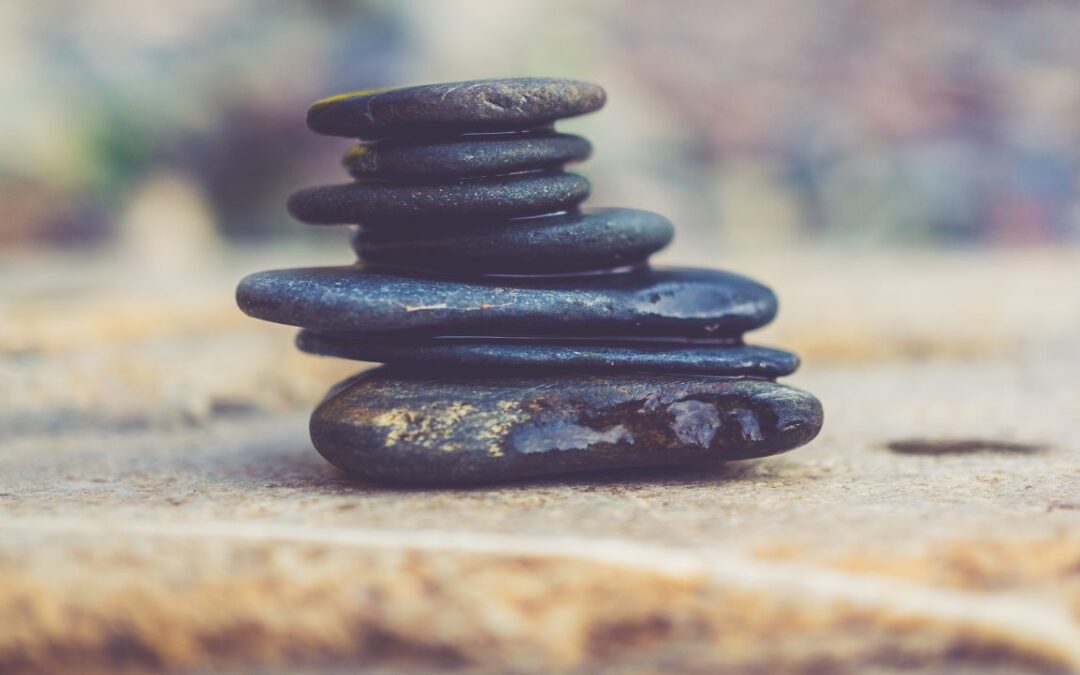Few things are as unsettling as when we lose balance. Losing balance does not have to be a given as we age. There are things we can do to maintain our balance.
Our feet and calves are the most important part of our bodies for mobility and balance, and yet, they are the most ignored. Ask anyone over 60 and most will tell you their balance isn’t what it used to be. Most blame it on their age, medication, or any chronic issues they are suffering. All of these can be a part of the problem. However, the real cause of our lack of balance as we age has more to do with the shoes we wear and the inserts we place in them. This is the topic of today’s newsletter, Balance: are we destined to lose it?
What Causes Poor Balance?
Age is often the major cause I hear of for bad balance, which is usually not the case. My dad used to say he was in perfect health–until he had a heart attack at 65. The truth is, he ate himself into a heart attack for 65 years because he didn’t know better. The same is true for balance. Medications and some chronic diseases can affect your balance. For most people though, balance issues are mostly caused by bad information they have been given about their feet.
The fear of falling is huge for older adults. This fear will cause many people to take shorter strides than they used to when they were younger as they no longer trust their balance. If they have already fallen, the fear is much higher. The shorter stride causes the calf muscles to shorten, reducing the range of motion of the ankle. With this reduced range of motion, the foot can no longer bend the way it is supposed to.
Your foot has twenty-nine muscles, twenty-six bones, and thirty-three articulations, meaning the foot is designed to be able to bend. If the ankle can no longer bend properly, the foot cannot bend either. This can increase your risk of falling. As the foot begins to harden over the years, the ability to use your toes is decreased, making your balance very difficult to maintain.
Traditional Treatments for When You Lose Balance
Most of us who have been to school for any health degree have been taught to treat symptoms, not causes. So, it is no surprise that the shoe industry would follow. Every business is looking for a niche and then filling it. That is good business. However, for you, it can lead to long-term issues with your feet and knees because we are not looking at you as a whole person.
The arch of your foot is your shock absorber like on your car. When you take a step, the arch is supposed to extend, or flatten, and absorb the impact of your body weight when hitting the ground. When the arch is too tight, it can be painful to walk, due to the lack of extension. If you have flat arches, pain is due to no muscle support from weak arches. The shoe industry designs shoes with arch supports to prevent the arch from overextending or lifts the arch up when weak, which reduces pain. When that no longer works, the podiatry industry has created inserts for your shoes trying to prevent further pain in the arches. Remind yourself that the purpose of the arch is to extend/flatten, like a shock absorber. As you can see, preventing the arch from extending makes little sense. It forces the knee to absorb the impact, which it was never designed to do.
When your heel hurts, we have heel pads and padded soles to prevent our heels from hurting. It has been shown, in a Harvard Medical School study, that heels on shoes, even one-inch heels, cause people to walk heel-to-toe. Now, I too, used to think that a person was supposed to walk heel-to-toe and I am sure you think the same way. To my surprise, and probably yours, we walk heel-to-toe because we wear shoes designed to prevent heel pain. We should step on the whole foot, not just the heel or ball of the foot first.
Finally, wearing thick-soled shoes may seem like a great idea to cushion our feet, and many doctors recommend we never walk barefoot on hard surfaces. But the truth is, thick-soled shoes prevent our brains from receiving messages from our feet when the gradation of the ground changes. This can lead to falls.
Many of my clients, young and old, are wearing shoes that cannot bend in the middle and this limits the range of motion of their ankles and feet. Most athletic shoes will bend at the toes, but that is not enough. If the shoe cannot bend in the middle by the arch, the ankle cannot bend through its full range of motion. In the spirit of trying to reduce injuries when running or walking, a product has been designed that actually creates possible injuries due to the lack of range of motion of the ankle and the foot.
How to Solve your Balance Issue and Foot Pain
Most of us never think about practicing how we walk. We were taught how to walk at the age of two, and no one has ever discussed it since. The problem is, we do not know how to walk correctly. I watch people walking all the time and I can tell you, most people walk from their thighs, not their feet. Here is a good exercise to do at home. Be sure you try this in a hallway or next to a wall in case you lose your balance.
Stand barefoot or in your socks on the floor. Now, slowly, take a step forward and feel what part of your foot hits the floor first, middle, and last. Is it your heel, the ball of your feet, or the outside of your feet? As you step through into your next step, feel how you roll through the back foot. Can you feel your weight rolling through the foot and feel the toes pushing you off into your next step? Are you beginning to wobble a little? This will take a little time, but feel how you hit the floor, how your weight shifts through your feet, and how you push off into your next step. I used to practice this for hours until I got it right.
.Look at your shoes. If they are older, you can see the pressure points on the bottom of the shoe as it will wear more at the pressure points than anywhere else. This is better than any machine at the drug store. Next, pick up your shoe and try to bend it in half. If you can’t bend it with your hands, neither can you bend it with your feet. Your shoes are forcing you to use your thighs when walking and this can lead to low back stiffness and pain or neck stiffness.
While sitting in a hard-backed chair, cross one leg over the opposite knee and rub your foot. The arch of your foot should feel as soft as the palm of your hand. If not, your foot cannot bend and that can lead to painful arches, plantar fasciitis, and Achilles’ tendinitis. Use your thumb and press gently, searching for sore spots. When you find one, press just hard enough so your brain can feel the pain, breathe out and allow the brain to relax the muscle. If you cannot press with your thumb, place a golf ball on the floor and slowly feel the ball on the bottom of your foot, looking for sore spots. Do not roll it around like a kid. It is fun but rolling has no therapeutic value. By finding each sore spot you can release the hardness, one spot at a time.
As your feet soften and you begin to regain strength in your feet, change your shoes to shoes you can bend completely in half without all that padding. Your friends, and even your doctor, may think you have lost your mind; but you can enjoy walking barefoot again around your house like you did when you were young. Here is a fun thing to do. Try walking on a nice patch of grass outside. Notice how the grass feels to your feet. There is an energy transference from the earth through your feet. This is one of my favorite things to do. You may enjoy it as well.
Tips to Improve your Stretching
All you need is a yoga strap and a tennis ball for the tennis ball massage. Give yourself about 15 minutes twice a day and you should see better results within 2 weeks. This, though, is a lifetime event. Think of your pet. they stretch everyday and several times a day. Stretch when they stretch. Follow the videos below and free your knees. In my opinion, the calf stretch is the most important stretch a human can do. It will solve many issues of the body.
Foot Everter and Inverter Stretch
Stretching is more about feeling the muscles letting go than forcing them to stretch. If you are forcing the muscle, you could be doing strength training, not stretching. Make sure you are feeling the intended muscle stretching. If not, the form could be wrong. Holding for 5 seconds allows the brain to release the muscle before it senses any danger. Repeating the stretches 10 times allows the brain to learn it is safe for the muscle to move that way.
Foot Pronation and Supination
Don’t forget the Tennis Ball Massage!
Softening your hips and back is easy when you use the tennis ball. Just lean against the wall and apply enough pressure to feel the painful area. The temptation is to press harder but resist it. Instead, breathe out and allow the muscle to soften under the ball. Then move to another spot and repeat. Continue doing this until most of the painful spots are gone. Check out previous newsletters to see the video.
If you like this article, please share it with your friends and family. Don’t forget to check out our social media pages, leave a comment, and as always, reviews are awesome!
Subscribe to my YouTube Channel for access to free videos as I post them.
Want to Talk with Me Directly? Start Here
We’re happy to offer you a complimentary 30-min virtual consultation so you can experience this for yourself. Schedule your introduction to Stretch n Release now.
About The Muscle Repair Shop
Drawing upon his personal experience as a former competitive athlete turned wheelchair, obese, and chronic pain sufferer, Muscle Repair Shop Founder Butch Phelps decided to take his health into his own hands when at the age of 36 he was told he might not make it to his 40th birthday. Applying balanced nutrition advice from his doctor along with a sound exercise program, he went from 315 lbs. to 180 lbs. Motivated by his experience, he then acquired degrees in advanced therapeutic massage and aging sciences to help people eliminate chronic pain. This included applying his expertise in how people age, including the effects of dementia, anatomy, psychology, and the day-to-day struggles living as an older person to his practice and development of The Muscle Repair Shop’s one-of-a-kind Stretch n’ Release Technique.
Available through in-office and virtual coaching treatment sessions, this unique combination of stretching and breath work teaches the brain to release the emotional side of muscle tension and pain allows clients to find lasting relief and healing from stiffness, aches, injuries, and chronic pain. The at-home exercises come with customized instructional videos and virtual or in-office support, allowing clients to enjoy and experience life and sports as they did before limitations slowed or curtailed activities.


